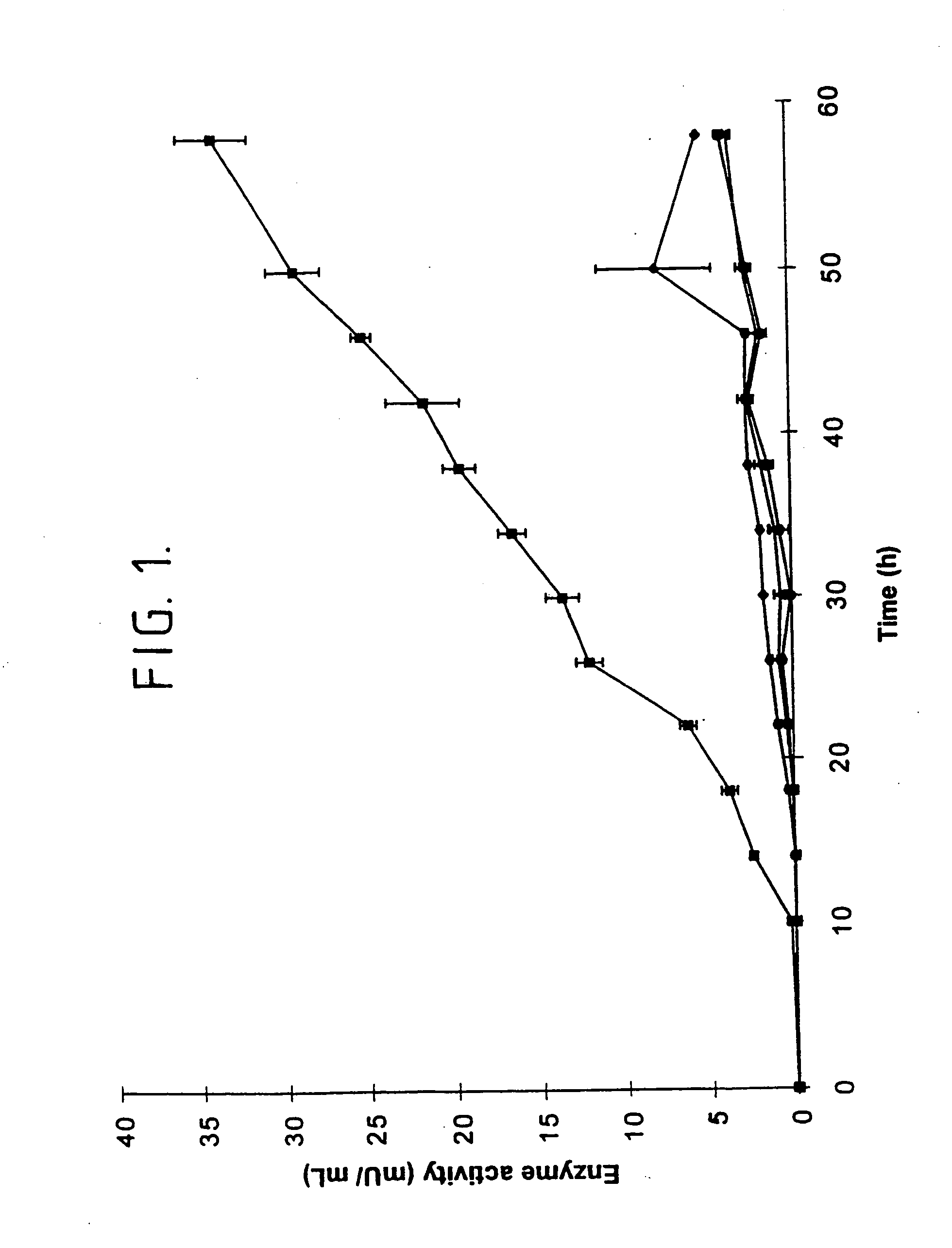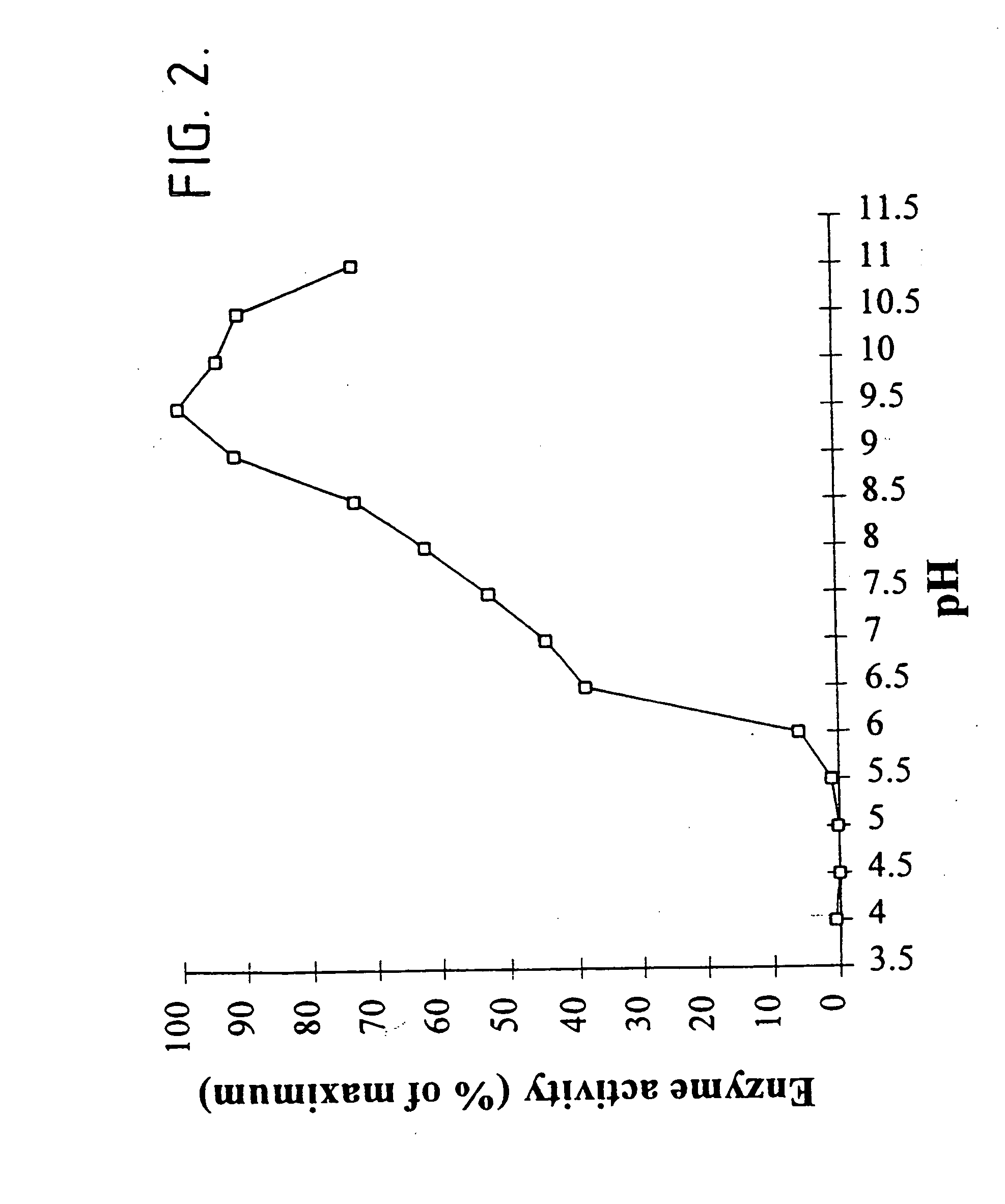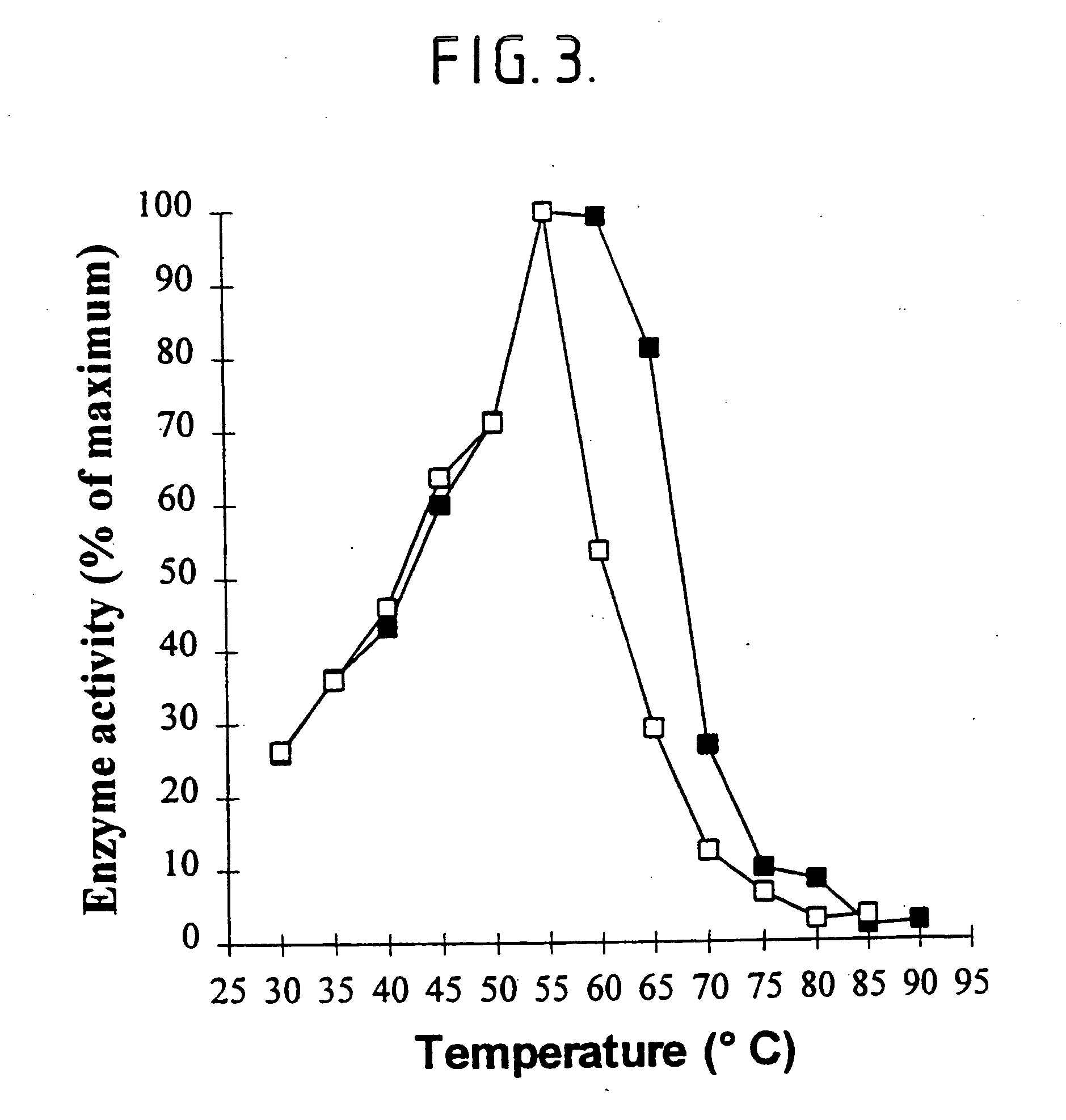Non-maltogenic exoamylases and their use in retarding retrogradation of starch
a technology of exoamylases and starch, which is applied in the field of proteins, can solve the problems of deteriorating quality of baked bread products, reducing the efficiency of baking,
- Summary
- Abstract
- Description
- Claims
- Application Information
AI Technical Summary
Benefits of technology
Problems solved by technology
Method used
Image
Examples
example 2
Baking Test of P. saccharophila Non-maltogenic Exoamylase
[0189] A baking test was set up to test the antifirming effect of P. saccharophila non-maltogenic exoamylase. A recipe for Danish Toast Bread was used. It contains flour (2000 g), dry yeast (30 g), sugar (30 g), salt (30 g) and water (approximately 1200 g corresponding to a dough consistency of 400 Brabender Units (BU)+60 g of additional water to compensate for the dry yeast used) are mixed in a Hobart mixer (model A-200) for 2 minutes at slow speed and for 12 minutes at high speed. The dough temperature is 26.degree. C. at the end of mixing. The dough is rested for 10 minutes at 30.degree. C. after which the dough is divided in dough pieces of 750 g. The dough pieces rest for 5 minutes in a proofing cabinet at a temperature of 33.degree. C. and a relative humidity of 85%. The dough pieces are then moulded on Glimek moulder (type LR-67) with the following settings 1:4, 2:2, 3:14 and 4:12, after which the moulded dough pieces a...
example 3
[0192] The following describes our cloning and expression of the mta gene encoding non-maltogenic exoamylase from Pseudomonas saccharophila in Escherichia coli MC1061.
[0193] In this respect, P. saccharophila IAM 1520 was grown in 2 ml LB medium and cells were harvested by centrifugation 10 min 20.000.times.g. Total DNA was isolated using a slightly modified miniprep protocol. The cells were resuspended in 300 .mu.l resuspension buffer (50 mM Tris-HCl, pH 8.0; 10 mM EDTA; 100 .mu.g / ml RNase A) after which the cells were disrupted using a Fastprep FP120 (BIO101; California). Following disruption, 300 .mu.l lysis buffer (200 mM NaOH; 1% SDS) and 300 .mu.l neutralization buffer (3.0 M potassium acetate, pH 5.5) were added. After centrifugation at 20,000.times.g for 15 min at 4.degree. C., the supernatant was collected and 0.6 volumes isopropanol was added. The DNA was precipitated by centrifugation at 20,000.times.g for 30 min at 4.degree. C., washed with 70% ethanol, and redissolved in...
example 4
Comparison of the Effect of a Non-maltogenic and a Maltogenic Exoamylase on Starch Retrogradation
[0206] Sweet potato .beta.-amylase (EC 3.2.1.2; obtainable from Sigma with product no. A7005) is a maltogenic exoamylase releasing maltose from the non-reducing ends of starch. The thermostability of this maltogenic exoamylase is similar to that of P. saccharophila non-maltogenic exoamylase as indicated by the residual activities after incubation for 15 minutes at temperatures from 45 to 75.degree. C. in 50 mM sodium citrate, 5 mM calcium chloride, pH 6.5 (Table 4).
7TABLE 4 Residual activities of sweet potato .beta.-amylase and P. saccharophila non-maltogenic exoamylase after incubation at increasing temperatures (in %).sup.a Incubation temperature (.degree. C.) 45 50 55 60 65 70 75 Sweet potato .beta.-amylase activity 100 117 55 12 5 4 4 (%) P. saccharophila exoamylase 100 68 29 10 7 6 6 activity (%) .sup.aActivity after incubation at 45.degree. C. set to 100%.
[0207] The effects of both...
PUM
| Property | Measurement | Unit |
|---|---|---|
| molecular weight | aaaaa | aaaaa |
| pH | aaaaa | aaaaa |
| temperature | aaaaa | aaaaa |
Abstract
Description
Claims
Application Information
 Login to View More
Login to View More - R&D
- Intellectual Property
- Life Sciences
- Materials
- Tech Scout
- Unparalleled Data Quality
- Higher Quality Content
- 60% Fewer Hallucinations
Browse by: Latest US Patents, China's latest patents, Technical Efficacy Thesaurus, Application Domain, Technology Topic, Popular Technical Reports.
© 2025 PatSnap. All rights reserved.Legal|Privacy policy|Modern Slavery Act Transparency Statement|Sitemap|About US| Contact US: help@patsnap.com



